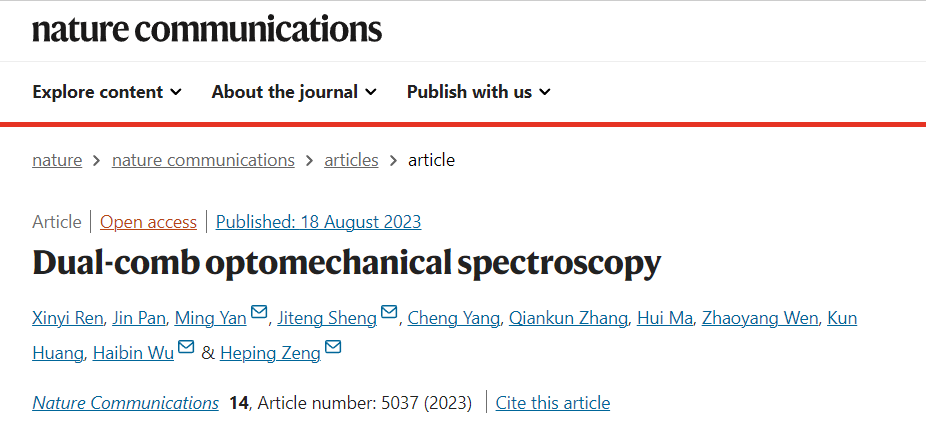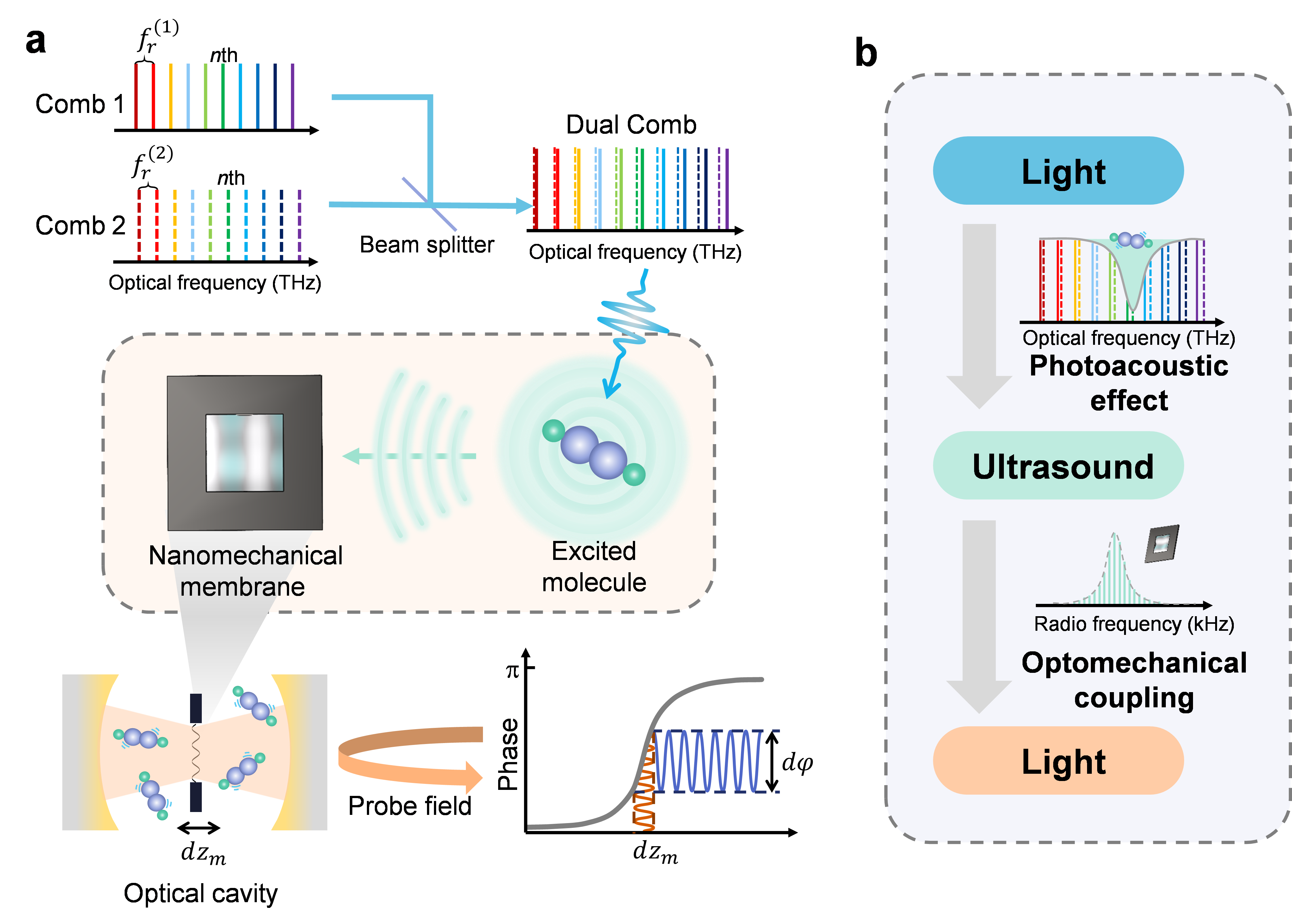The team of Professor Zeng Heping and Professor Wu Haibin from the State Key Laboratory of Precision Spectroscopy Science and Technology of East China Normal University have made important progress in the field of ultra sensitive molecular spectrum measurement, and proposed the dual comb optical force spectroscopy technology for the first time, realizing ultra sensitive measurement of broadband high-resolution molecular fingerprint spectrum. The relevant results were published online in the journal Nature Communications on August 18, 2023, under the title "Dual-comb optomechanical spectroscopy".
Optical frequency comb, abbreviated as optical comb, is composed of numerous coherent frequency teeth with equal spacing distribution. Its emergence has changed the traditional spectral measurement method. Especially the dual comb spectroscopy technology, using two comb teeth with unequal spacing, can achieve rapid and high-resolution measurement of molecular fingerprint spectra in a precise frequency measurement method similar to a vernier caliper over an extremely wide spectral range. Therefore, it provides an efficient measurement tool for basic disciplines and spectral application research such as molecular physics, analytical chemistry, atmospheric remote sensing, coherent imaging, and molecular fingerprint databases. However, due to limitations such as infrared detection and cavity mirror coating, the sensitivity of dual comb molecular absorption spectroscopy technology still needs to be improved.
Cavity optomechanics originated from the observation of gravitational waves. Thanks to the dual enhancement effect of high-quality factor mechanical oscillators and optical cavities, cavity optomechanics has been applied in various ultra sensitive detection schemes and quantum sensor devices in recent years. The research team proposed a new method of cavity optical force enhancement using optical comb spectroscopy, which utilizes dual optical combs to excite gas molecule resonance in the cavity, forming ultrasonic waves and causing small vibration displacement of silicon nitride thin films inside the cavity; At the same time, the dual comb photoacoustic signal is enhanced by a cavity optical force sensing system composed of a micro nano thin film oscillator, an optical cavity, and a single longitudinal mode detection optical field.
This method utilizes the photoacoustic effect to achieve the organic integration of dual comb spectrum identification and ultra sensitive cavity optical force detection, and avoids the limitations of traditional cavity enhanced absorption spectroscopy technology in infrared detection and broadband coating. It demonstrates technical advantages in sensitivity (equivalent noise concentration 15 ppt), spectral width (>2 THz), measurement time (<1 ms), spectral resolution (100 MHz or 0.8 pm) and simultaneous measurement of multiple comb teeth (>1000). Especially, this study provides a new approach for combining cavity photomechanics with spectroscopy, which is expected to be applied in important fields such as medical respiratory diagnosis, environmental detection, and trace analysis.

The latest collaboration results between Zeng Heping and Wu Haibin's research group are published in the sub journal of Nature

Principle diagram of dual comb optical force spectrum

Experimental results of dual comb optical force spectroscopy
Source:科研动态丨华东师大团队在腔光力与光梳光谱领域取得进展(qq.com)
Paper Link:Dual-comb optomechanical spectroscopy | Nature Communications
